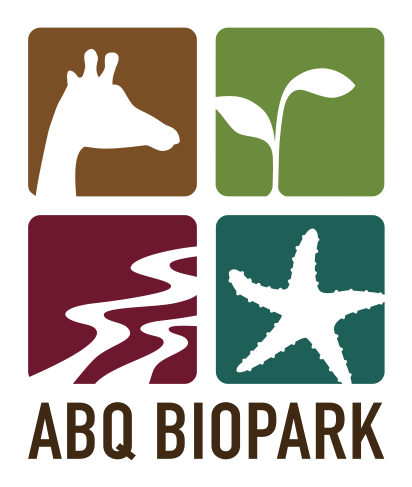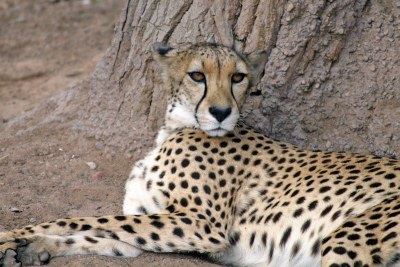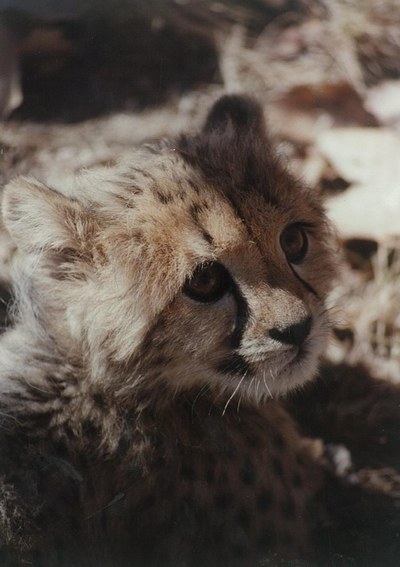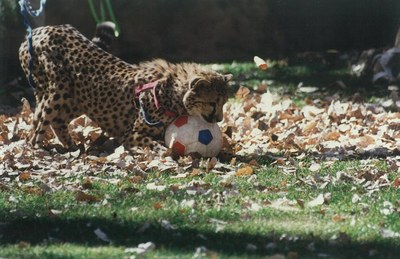
Cheetah Conservation at the BioPark
ABQ BioPark a leader in innovative breeding procedure, home to a number of cheetahs over the years.
12/01/2017 - Cheetahs have been an important part of the zoo since 1970. In addition to welcoming a number of cheetahs over the years, the zoo has bred and even participated in groundbreaking reproduction efforts, welcoming the first cheetah cub that survived into adulthood resulting from artificial insemination using frozen sperm.
From Jane to Annabelle: ABQ BioPark’s Cheetahs Over the Years

Jane was one of the zoo’s first cheetahs in 1970 and the ABQ BioPark’s cheetah exhibit officially opened in 1983. Rafiki and Liza were some of the first cheetahs to enjoy this new exhibit. Some of the ABQ BioPark’s other cheetah residents have included Seluki, Sabie, Ralph, Esperanza and Annabelle.
Senior Zookeeper Jenn Erickson cares for 15-year-old Annabelle, the zoo’s current resident cheetah. Annabelle came to ABQ BioPark in 2004 by way of the Fossil Rim Wildlife Center in Texas, where she was born in 2002 as part of the collaborative effort of zoos to support and sustain this species through the Association of Zoos and Aquariums Cheetah Species Survival Plan (SSP).
Esperanza: “Hope” for a Dwindling Population

Her name was Esperanza—“hope” in Spanish—and she gave cheetah biologists hope for a quickly declining species. In the early 1980s, scientists discovered that both cheetahs in the wild and in zoos have a very small gene pool. This makes cheetahs especially susceptible to diseases.
In 1994, a project team traveled to Namibia to collect new genetic material to help increase the genetic diversity of the population of cheetahs in zoos. The hope was that the use of frozen sperm could infuse new genes into the North American cheetah population. It was this precious sperm that was used to artificially inseminate the ABQ BioPark’s female cheetah Sabie. Sabie gave birth to Esperanza in 1995—she was the first cheetah cub to survive into adulthood from artificial insemination using frozen sperm.
Esperanza’s birth was the successful culmination of a scientific project led by the National Zoo’s Conservation and Research Center in partnership with five other American zoos, British Airways and the Cheetah Conservation Fund in Namibia.
While future artificial insemination attempts with Esperanza were unsuccessful, Esperanza survived into adulthood and became an important member of the ABQ BioPark’s education crew for years, serving as an important ambassador for cheetahs both locally and nationally.
Conservation Connection

Although Esperanza is no longer at the ABQ BioPark, her legacy and our commitment to cheetah conservation live on. The facility actively continues its mission for cheetahs through education and fundraising.
The New Mexico BioPark Society helped send zookeeper Lisa Moore to the Cheetah Conservation Fund (CCF) in Namibia in 2016. There, she learned about important initiatives like the Livestock Guard program, which pairs local farmers with large guard dogs that protect livestock from cheetahs, and a Bushblok initiative, which converts invasive acacia thorn bush into fuel logs. Moore’s experiences with CCF have strengthened the ABQ BioPark’s cheetah conservation efforts.
This October, the BioPark Conservation Committee hosted CCF’s founder, Dr. Laurie Marker, for a charity dinner and presentation. The event helped spread the word about cheetah conservation efforts. All proceeds from the dinner went to CCF.
Connecting the community and visitors to the BioPark’s animals is also an extremely important job for zoo staff. Today, cheetahs have are listed as a vulnerable species—they face habitat loss and fragmentation, poaching for skins and collection for the pet trade. Join the ABQ BioPark for International Cheetah Day on Saturday, December 2, 2017, to learn more about cheetahs and how you can help.
Photos: (Top) Annabelle courtesy of Boots' Photography; (Middle and bottom) Esperanza, courtesy of Linda McNatt.

